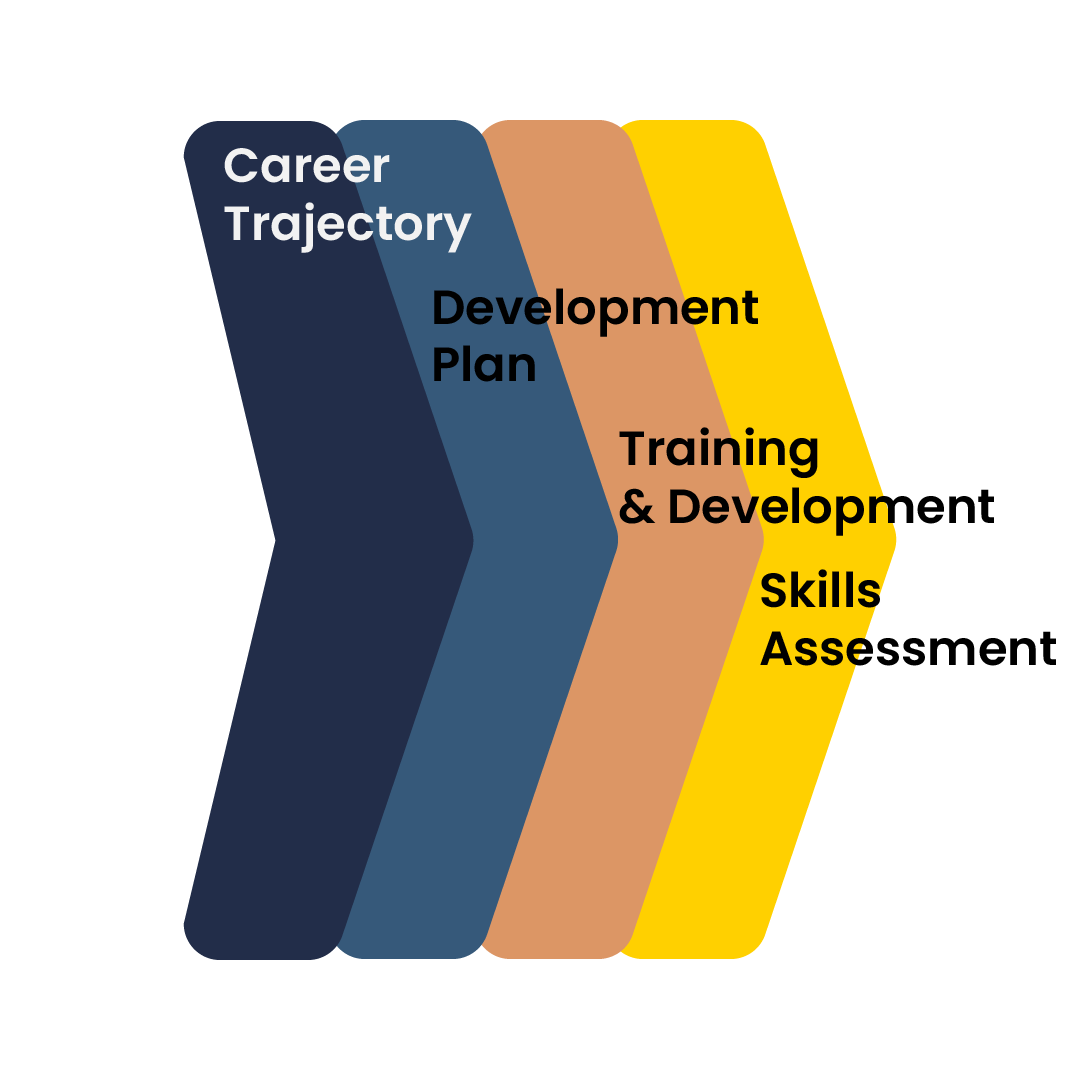The Develop Mindset
Listening time: 5:26
Many consider their formal education to be the end of learning. However, applying theory in the workplace highlights the need for continuous development.
Career growth requires understanding your role and organization, staying informed, and remaining current with industry standards. To advance professionally, set development goals to build skills, demonstrating a commitment to new knowledge and experience.
When you implement the Develop Mindset from the Mérito Mindset Framework, you’re embracing the idea of taking charge of your career and development goals.
Develop Mindset
A holistic mindset to pursue the accumulation of knowledge and skills.
Professional development is the active pursuit of new knowledge and skills to improve job performance, stay current, and advance one's career. It's about continuous learning to remain relevant in the workplace.
Begin by setting a clear goal for your desired position, then create a professional vision board and outline your career trajectory. This long-term plan, spanning 3-5 years, should include intermediate positions necessary to achieve your final role.
Assess your career trajectory by reviewing the organizational chart, speaking with your supervisor, researching industry standards, or consulting network connections.
Your career trajectory is your roadmap to professional success—your ultimate milestone. This could be the highest organizational position or a role that offers a quality work-life balance. Professional development is crucial for achieving your career goal.
Remember, a career trajectory isn't fixed; it can change if it no longer aligns with your personal and professional fulfillment.
A development plan details your short-term and long-term (1-3 years) goals, along with the learning initiatives required to achieve your desired career path.
Collaboration with your supervisor is the most effective way to develop a plan, as it benefits both you and the organization. This approach facilitates assessment, idea exchange, and access to organizational support.
Although a plan can be developed independently, it may necessitate extensive research. Refer to your career trajectory, speak with your supervisor or training coordinator, or research vacancy announcements for similar positions to outline required knowledge and skills.
Next, research how to meet this plan. Some industries have set learning paths, but many other methods exist to develop knowledge and skills, such as:
On-the-job learning: Also known as shadow training and sometimes “other duties assigned,” is considered formal 1:1 training
Stretch or detailed assignments: temporarily assigned to another position for 4-6 months
Training courses: a virtual or in-person instructor-led class
Self-paced learning: certification or course completion through a self-learning process via hard-cover books or a virtual course
Relationship learning: 1:1 informal experiential learning
Reading: learning by reading professional self-help books
To ensure timely achievement without added work-life stress, a practical development plan should encompass both short and long-term goals.
Once your development plan is in place, establish specific training and development goals for the year. This involves scheduling and evaluating your approach, whether it's through online courses, self-paced study, or challenging assignments. For any training exceeding two days, coordinate with your supervisor to ensure their full support. Be aware that certain learning paths, such as those leading to certification, may be subject to industry standards that mandate prior work experience.
Gaining and mastering new knowledge or skills takes time and effort. Executing these goals isn't easy, as daily workload, financial issues, family responsibilities, and health concerns can interfere. Don't let distractions derail your progress; perseverance is key to obtaining degrees, certifications, or technical training.
Also, don't hesitate to ask your supervisor for financial support. It's a win-win, for you and the organization but be prepared to sign a commitment agreement, typically 2-3 months post-training, to ensure you don't leave abruptly.
Remember, training keeps you relevant in your current position, while development keeps you relevant in your career.
To prepare for your next role, track your training and conduct a skills assessment. This assessment should identify the technical (hard) skills required, such as proficiency with tools, applications, and professional certifications, which help validate your knowledge and streamline your work. Additionally, assess your soft skills (behavioral competencies), including communication, teamwork, problem-solving, and adaptability, as these are crucial for successful task completion. Development courses are available for both hard and soft skills to support your growth.
Remember that there is a distinct difference between behavioral competencies, also known as soft skills, and emotional intelligence.
Behavioral competencies refer to the knowledge, skills, abilities, and attitudes that an individual must demonstrate to perform a task, activity, or function effectively.
Emotional intelligence encompasses recognizing, understanding, and managing emotions, as well as developing self-awareness, self-regulation, empathy, and social skills.
That’s the Develop Mindset: A holistic approach to your professional development. To successfully achieve your ultimate career goal, develop a clear career trajectory that details the necessary preceding positions. Outline a development plan with both short-term and long-term goals, specifying the actions required to reach this trajectory. Define your development objectives for the current year. Reevaluate your skills, incorporating behavioral competencies (also known as soft skills).
Don’t just wait for your supervisor to guide you through it, be proactive in your development and take…
“Professional growth in your hands!”
Ish & Raquel
Schedule a call with us to learn more about the Mérito Mindset

